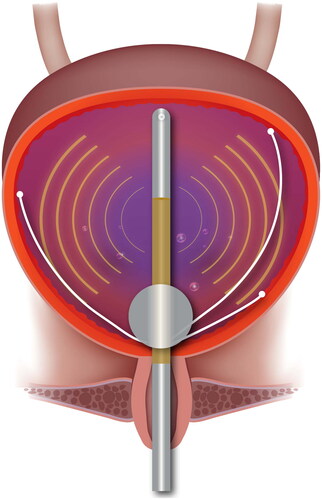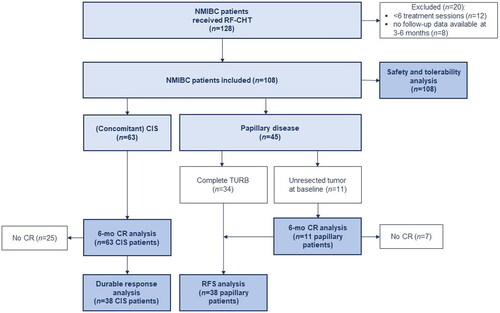Figures & data
Figure 1. Transurethral urinary catheter with incorporated radiofrequency applicator and three distended thermocouples.

Table 1. Baseline characteristics of the study population.
Table 2. Descriptions of thermal dose parameters.
Table 3. Descriptions of fraction of thermal dose ‘goals’ achieved of multiple sessions per patient.
Table 4. Unadjusted odds ratios (OR) and hazard ratios (HR) with corresponding p-values for complete response at six months (6-mo CR; for CIS patients [CIS] and for papillary patients [papillary]), recurrence-free survival (RFS), progression-free survival (PFS) and overall survival (OS).
Figure 3. Distribution of patients in whom bladder spasms occurred by A. Tmedian and B. median CEM43T50 groups.

Table 5. Association between thermal dose parameters and the occurrence of bladder spasms, presented as odds ratio (OR) with corresponding p-value.

